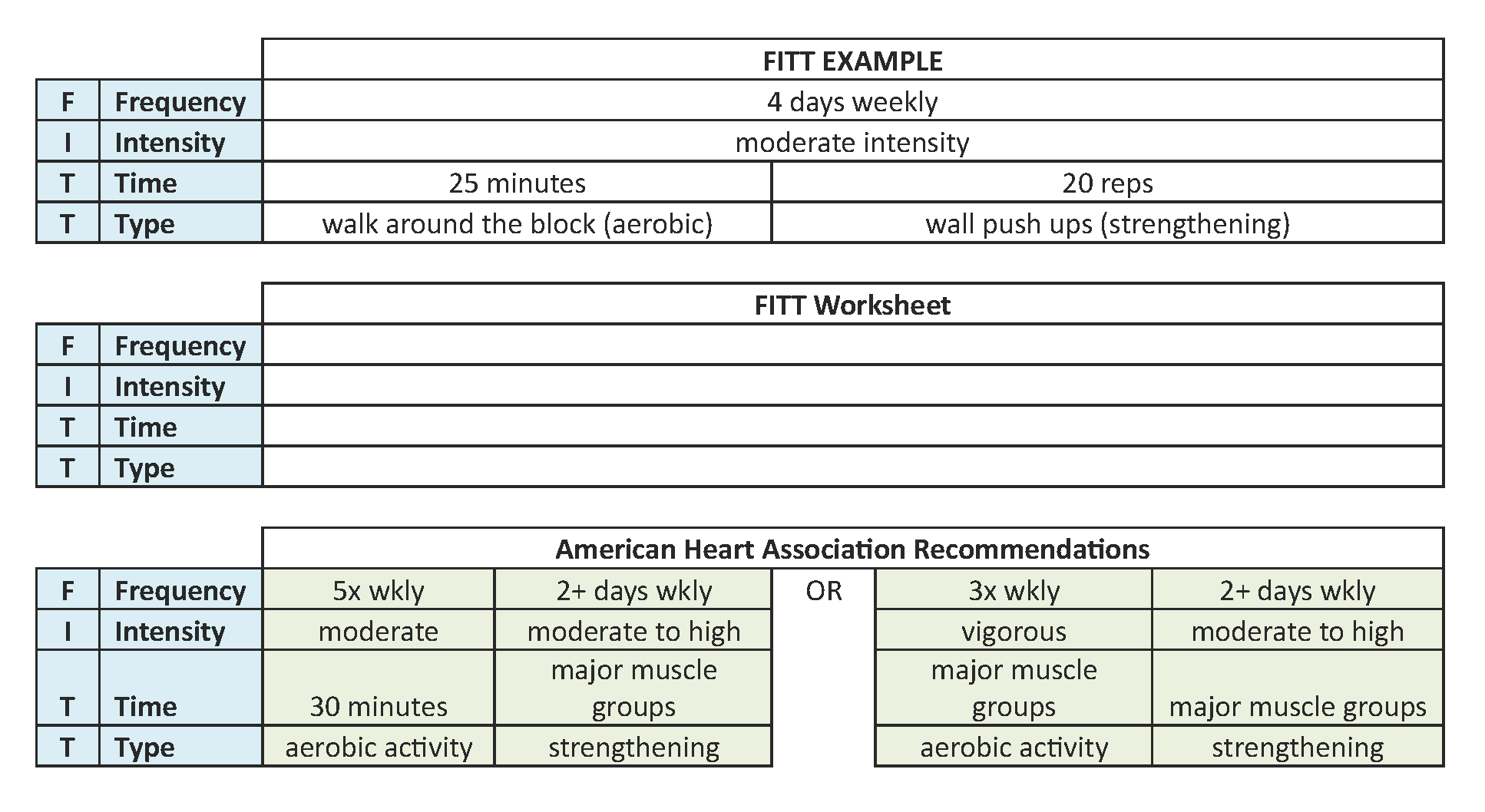Have you ever had a hard time picking a fitness plan or exercise program? There are a million plans out there! Which one is best? Which one fits into your lifestyle? Which one guarantees results? Create a plan that “fits” you.
Based on your own goals and circumstances fill in a FITT Principle chart. This can be your starting point. You can follow your own plan from there or find one that fits within your established guidelines!
If you are new to exercise, remember, work your way up. You don’t need to run a marathon or spend hours in a gym to feel the benefits of exercise. Once you get started, make a plan to increase at least one FITT component regularly to help you stay on track and make improvements. Let’s get started with FITT!
F – Frequency
How many days per week can you make time to exercise?
I – Intensity
How intense will you exercise? Intensity can vary between light, moderate and vigorous intensity activities. For example, walking slowly is a low intensity activity, walking briskly or shooting around a basketball is a moderate intensity activity and running (>5mph) is a vigorous intensity activity. A good rule of thumb is that a person doing moderate-intensity aerobic activity can talk, but not sing. A person doing vigorous-intensity activity cannot say more than a few words without pausing for a breath.
T – Time
How many minutes will you dedicate to an activity or exercise?
T – Type
What sort of activity will you complete? Aerobic activities like walking, jogging, biking, swimming or dancing or strengthening activities such as exercises using exercise bands, weight machines or hand-held weights.

150 minutes of moderate to vigorous physical activity is recommended each week. For some, a serious behavior change is needed and for others, a modification to current behaviors is more appropriate. When adopting or modifying a physical activity routine, it is important to set realistic goals. Too often, individuals expect to lose unrealistic amounts of weight, run faster and longer and start seeing drastic body composition changes instantly. Instead, use the acronym S.M.A.R.T.
Specific is the what, where and how of the goal.
Measurable is how you will evaluate whether or not you met the goal.
Achievable is setting a goal that you can accomplish.
Realistic is setting a goal that is challenging, but attainable.
Timely relates to when you want to achieve your goal by, and what time frame you have to reach your goal.
Putting the FITT principle together, one can effectively plan an exercise routine and set a S.M.A.R.T. goal.
Source: Avera Health Tip & SDSU Extension

